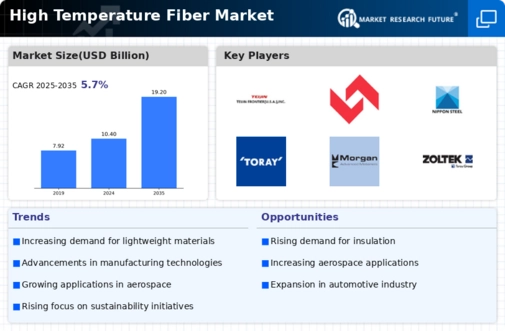High Temperature Fiber Market Summary
The Global High Temperature Fiber Market is projected to grow from 10.4 USD Billion in 2024 to 19.2 USD Billion by 2035, reflecting a robust growth trajectory.
Key Market Trends & Highlights
High Temperature Fiber Key Trends and Highlights
- The market is expected to achieve a compound annual growth rate (CAGR) of 5.69 percent from 2025 to 2035.
- By 2035, the market valuation is anticipated to reach 19.2 USD Billion, indicating strong demand for high temperature fibers.
- In 2024, the market is valued at 10.4 USD Billion, showcasing its current significance in various industries.
- Growing adoption of advanced materials due to increasing industrial applications is a major market driver.
Market Size & Forecast
| 2024 Market Size | 10.4 (USD Billion) |
| 2035 Market Size | 19.2 (USD Billion) |
| CAGR (2025-2035) | 5.69% |
Major Players
Teijin Limited, Unifrax, Lydall, SGL Carbon SE, Saint-Gobain Performance Ceramics & Refractories, Nippon Steel Corporation, Toray Industries, Inc., Advanced Ceramics Manufacturing Limited, GrafTech International Ltd., Mitsubishi Chemical Corporation, 3M Company, Morgan Advanced Materials, Zoltek







